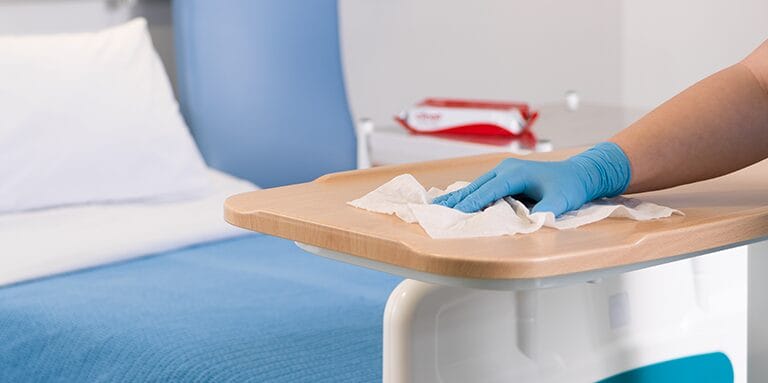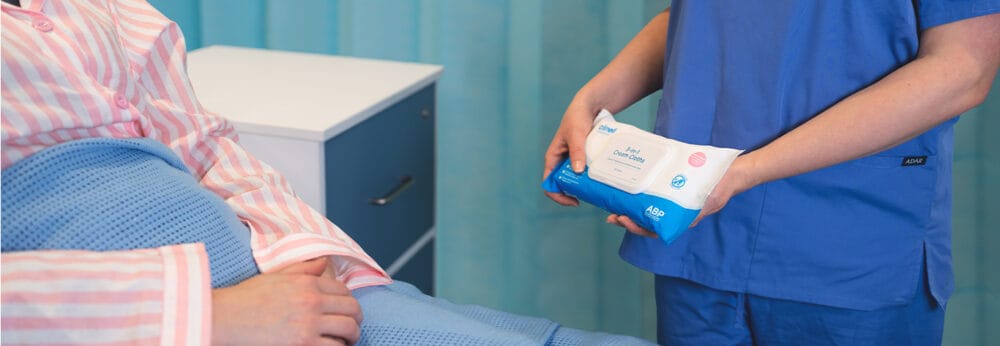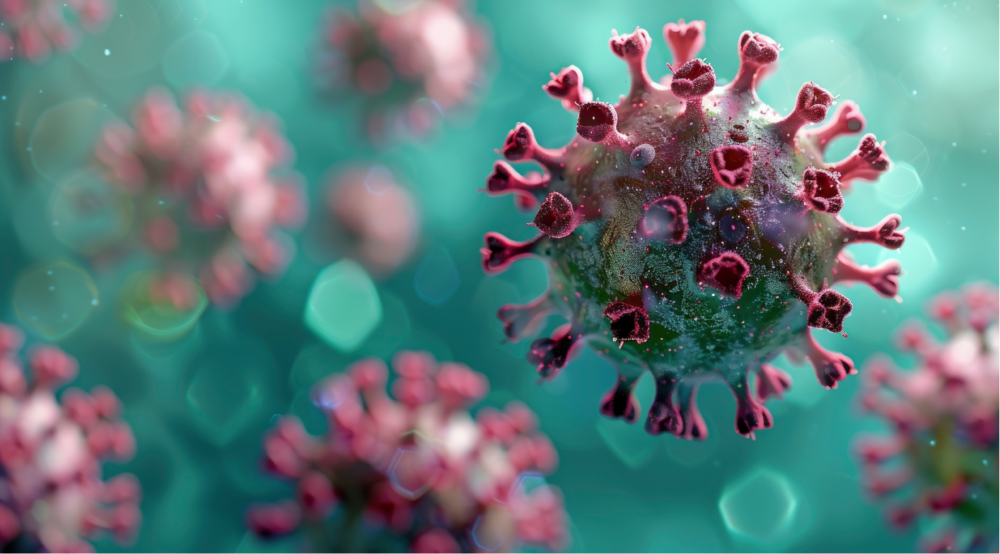Posted
6th March 2024
Research
The power of effective surface decontamination
The hidden threat of pathogens like Clostridioides difficile (C. diff) presents a formidable challenge to infection control efforts in healthcare facilities.1 C. diff is an anaerobic, spore-forming, Gram-positive bacterium commonly causing gastrointestinal disease. It spreads through direct or indirect contact between individuals and C. diff infection (CDI) is often associated with excessive or unnecessary antimicrobial therapy.2 C. diff spores can survive on inanimate surfaces up to 5 months.3 Prolonged persistence in the environment is thought to be one of the main mechanisms that allows patient to patient transmission.3
C. diff is primarily transmitted through the faecal-oral route4,5 and is frequently found in healthcare environments, posing a substantial risk of infection, especially among individuals undergoing or recently completing antibiotic treatment. Factors such as age, recent hospital stays, weakened immune systems, prior C. diff infection, or direct exposure to the bacteria contribute to susceptibility6. However, even those without these risk factors can still develop C. diff infections, which can lead to complications ranging from dehydration and colitis to toxic megacolon, sepsis, and, in extreme cases, death. 7 While many healthy individuals exposed to C. diff may not show symptoms, asymptomatic carriers still have the potential to transmit the bacteria.7 This is why effective surface decontamination protocols are critical in halting the spread of this bacterium within healthcare settings. In Australia, the number of CDI diagnoses in public hospitals has been steadily rising since 2014, with an average increase from 518 to 677 cases per month in 2019, consequently resulting in prolonged hospital stays, escalated healthcare costs, and increased mortality rates. 8
Traditional disinfection methods including high temperatures, ultraviolet light, and some commonly used disinfectants like alcohol and quaternary ammonium compounds (QAC’s) often fall short in eliminating C. diff spores9,10. Some disinfectants like QAC’s tend to be sporistatic in nature, meaning they inhibit growth of the sporicidal bacterium, temporarily preventing germination but still able to cause harm.11-14
Oxidising agents such as peracetic acid and hydrogen peroxide have proven to be sporicidal in nature when used at the right concentration, meaning they target and destroy C.diff spores and are crucial in reducing contamination of surfaces and infection rates.11,15 One study showed that even in heavily soiled conditions peracetic acid generating wipes, when switched from chlorine-based cleaning protocols, reduced C.diff infections by 72%.16

Healthcare professionals face significant challenges in preventing and managing C. diff infections. Traditional disinfection methods struggle to eradicate C. diff spores, which exhibit high resistance to common disinfectants like alcohol.9 Additionally, chlorine-based products, often utilised for disinfection of spores, necessitated high concentrations, posing risks of irritation, toxicity, and corrosion in patient areas, leading to user resistance.
To effectively reduce C. diff, a comprehensive approach is necessary. This includes implementing appropriate antimicrobial prescribing practices, conducting early testing and detection of CDI, adhering to standard precautions for all patients, employing contact precautions for those displaying C. diff symptoms, and integrating sporicidal disinfectants into rigorous environmental cleaning practices.9,16
Join our Stay a Step Ahead IPC Winter Campaign to learn more about effective infection control strategies and enter the IPC Hot Tips Competition for the chance to win exciting prizes.
References
- Clostridiodes difficile infection -Laboratory case definition Clostridiodes difficile infection (Clostridioides difficile). (n.d.). Retrieved February 15, 2024, from https://www.health.gov.au/sites/default/files/documents/2022/06/clostridiodes-difficile-infection-laboratory-case-definition_0.pdf
- Clostridioides difficile infection monitoring in Australia | Australian Commission on Safety and Quality in Health Care. (n.d.). Www.safetyandquality.gov.au. https://www.safetyandquality.gov.au/our-work/infection-prevention-and-control/clostridioides-difficile-infection-monitoring-australia
- Claro T, Daniels S, Humphreys H. Detecting Clostridium difficile spores from inanimate surfaces of the hospital environment: which method is best?. J Clin Microbiol. 2014;52(9):3426-3428. doi:10.1128/JCM.01011-14
- (2020, March 27). Clinical C. diff Q & A. Centers for Disease Control and Prevention. https://www.cdc.gov/cdiff/clinicians/faq.html#:~:text=diff%3F-
- Czepiel, J., Dróżdż, M., Pituch, H., Kuijper, E. J., Perucki, W., Mielimonka, A., Goldman, S., Wultańska, D., Garlicki, A., & Biesiada, G. (2019). Clostridium difficile infection: review. European Journal of Clinical Microbiology & Infectious Diseases, 38(7), 1211–1221. https://doi.org/10.1007/s10096-019-03539-6
- (2018, December 17). Your Risk of C. diff. Centers for Disease Control and Prevention. https://www.cdc.gov/cdiff/risk.html
- Furuya-Kanamori, L., Marquess, J., Yakob, L., Riley, T. V., Paterson, D. L., Foster, N. F., Huber, C. A., & Clements, A. C. A. (2015). Asymptomatic Clostridium difficile colonization: epidemiology and clinical implications. BMC Infectious Diseases, 15(1). https://doi.org/10.1186/s12879-015-1258-4
- Australian Commission on Safety and Quality in Health Care, Clostridioides difficile infection 2019 Data Snapshot Report. (2021). https://www.safetyandquality.gov.au/sites/default/files/2022-02/cdi_2019_data_snapshot_report_-_december_2021.pdf
- Leggett, M. J., Setlow, P., Sattar, S. A., & Maillard, J.-Y. . (2016). Assessing the activity of microbicides against bacterial spores: knowledge and pitfalls. Journal of Applied Microbiology, 120(5), 1174–1180. https://doi.org/10.1111/jam.13061
- Dilnessa T, Getaneh A, Hailu W, Moges F, Gelaw B. Prevalence and antimicrobial resistance pattern of Clostridium difficile among hospitalized diarrheal patients: A systematic review and meta-analysis. PLoS One. 2022;17(1):e0262597. Published 2022 Jan 13. doi:10.1371/journal.pone.0262597
- Russell AD. Bacterial spores and chemical sporicidal agents. Clin Microbiol Rev 1990;3:99-119.
- Rutala WA, Weber DJ. Guideline for disinfection and sterilization in healthcare facilities, 2008. Centers for Disease Control 2008.
- Rutala WA, Weber DJ. Disinfectants used for environmental disinfection and new room decontamination technology. Am J Infect Control 2013;41:36-41
- Weber DJ, Anderson DJ, Sexton DJ and Rutala WA. Role of the environment in the transmission of Clostridium difficile in healthcare facilities. Am J Infect Control 2013;41:105-10
- Maillard J-Y. Innate resistance to sporicides and potential failure to decontaminate. J of Hosp Infec 2010.
- Carter, Y., & Barry, D. (2011). Tackling C difficile with environmental cleaning. Nursing Times, 107(36), 22–25. https://pubmed.ncbi.nlm.nih.gov/21998939
SHARE THIS ARTICLE
Tags
Latest News
Advancing Continence Care with Clinell Contiplan: Expanded Indications, Pathways and Proven Outcomes
This World Continence Week, Clinell Contiplan 3-in-1 Cream Cloths introduce…
Celebrating 20 Years of GAMA Healthcare: Our Story
This month, GAMA Healthcare celebrates 20 years of helping prevent…
Norovirus and gastroenteritis outbreaks, the party ‘pooper’ you don’t want invited!
Recently, on 11 October 2024, NSW Health issued a health…
Clean Between to Reduce Healthcare-Associated Infections
Healthcare-associated infections (HAIs) are a significant concern for healthcare facilities…



